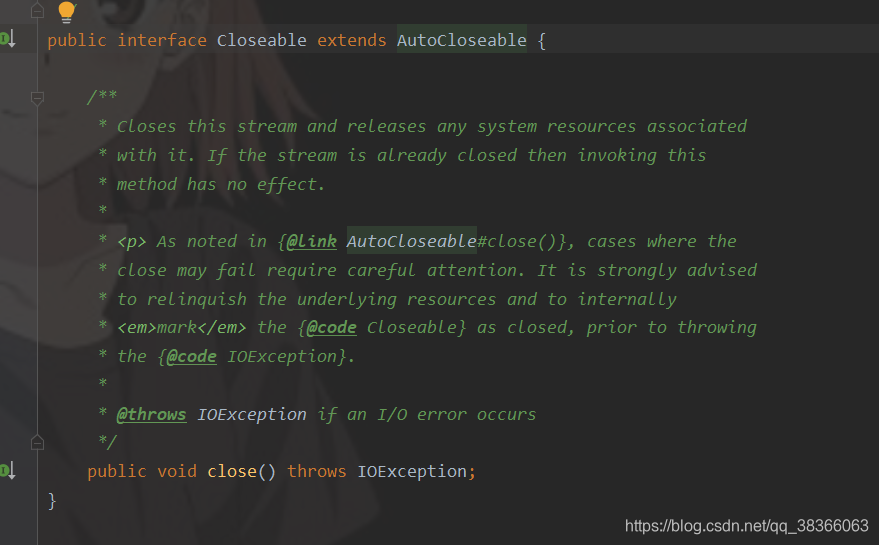try(){}的简单理解
以前使用try catch-finally都是捕获异常,然后流关闭等等,代码总是这样的:好比往FileOutputStream写东西:
@Test
public void test2() throws IOException {
File file = new File("E://test");
if (!file.exists()) {
file.createNewFile();
}
FileOutputStream fileOutputStream = new FileOutputStream(file);
try {
System.out.println("do something...");
fileOutputStream.write("aaa".getBytes());
fileOutputStream.flush();
} catch (Exception e) {
System.out.println("do ...");
} finally {
fileOutputStream.close();
}
}
这样写很难受,可以进行优化,将FileOutputStream fileOutputStream = new FileOutputStream(file)放到try()里面,也可以放多个,
@Test
public void test2() throws IOException {
File file = new File("E://test");
if (!file.exists()) {
file.createNewFile();
}
try( FileOutputStream fileOutputStream = new FileOutputStream(file);) {
System.out.println("do something...");
fileOutputStream.write("aaa".getBytes());
fileOutputStream.flush();
} catch (Exception e) {
System.out.println("do ...");
}
}
try()里每个声明的变量类型都必须是Closeable的子类,就一个close方法;相当于系统自动将关闭操作放到了finally里面而不需要我们自己写了,很nice;

世界上所有的不公平都是由于当事人能力不足造成的.



